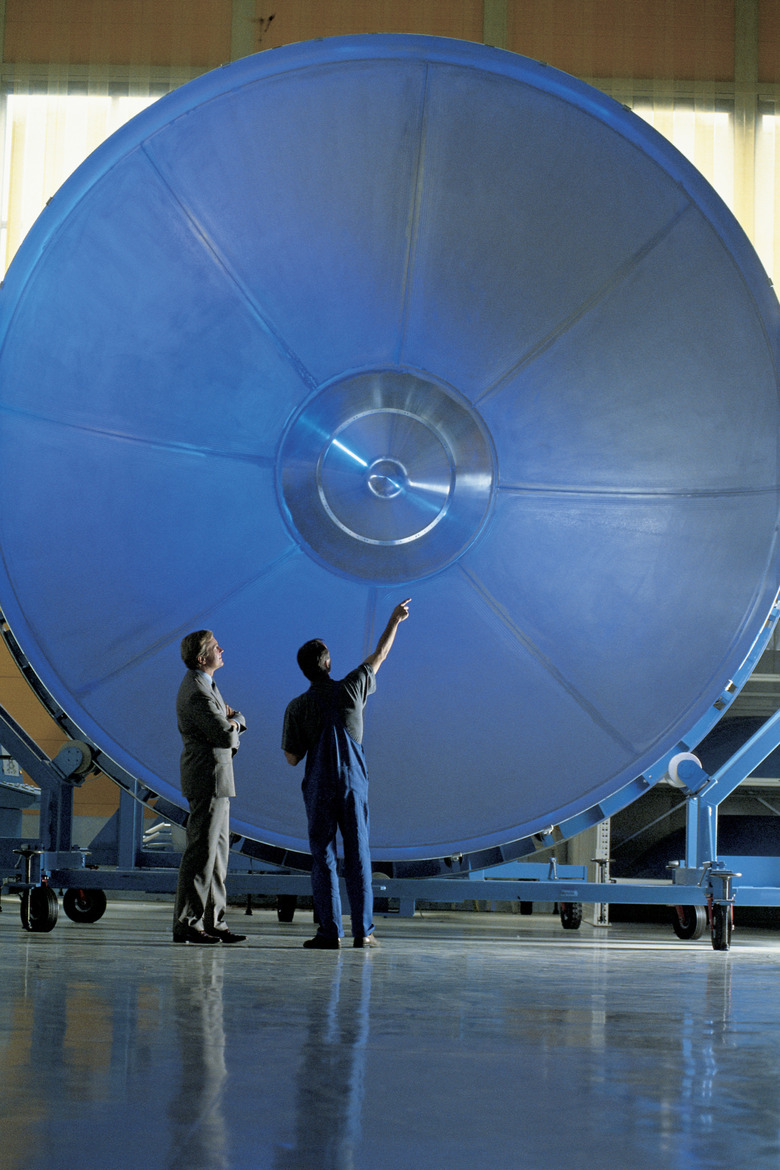How To Calculate The Minimum Flow Rate Of The Cooling Water
Cooling water travels through a chiller, absorbing heat through coils or fins. The more quickly the water flows through the chiller, the more quickly the chiller transfers heat. The chiller's minimum flow rate is the flow rate that produces a desired cooling rate if the device works at 100 percent efficiency. In practice, the water usually will not cool at that rate without an even higher flow rate because it absorbs and releases additional heat through unexpected chiller regions.
Step 1
Subtract the water's temperature as it leaves the chiller, measured in degrees Fahrenheit, from its temperature on entering it. For example, if water enters the chiller at 40 degrees Fahrenheit and leaves at 66 degrees Fahrenheit: 66 – 40 = 26 degrees.
Step 2
Multiply this answer by 500, a figure that takes into account water's specific heat capacity: 26 × 500 = 13,000.
Step 3
Divide the cooling rate that you need, measured in British thermal units (BTUs) per hour by this answer. For example, if the chiller must absorb 3,840,000 BTUs each hour: 3,840,000 ÷ 13,000 = 295.4. This is the chiller's minimum cooling rate, measured in gallons per minute.
Cite This Article
MLA
Menezes, Ryan. "How To Calculate The Minimum Flow Rate Of The Cooling Water" sciencing.com, https://www.sciencing.com/how-11385341-calculate-minimum-flow-rate-cooling-water/. 7 August 2017.
APA
Menezes, Ryan. (2017, August 7). How To Calculate The Minimum Flow Rate Of The Cooling Water. sciencing.com. Retrieved from https://www.sciencing.com/how-11385341-calculate-minimum-flow-rate-cooling-water/
Chicago
Menezes, Ryan. How To Calculate The Minimum Flow Rate Of The Cooling Water last modified March 24, 2022. https://www.sciencing.com/how-11385341-calculate-minimum-flow-rate-cooling-water/
